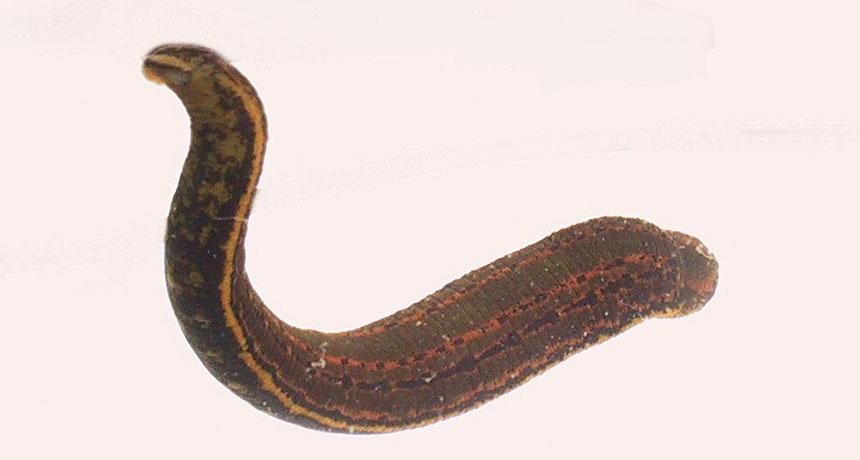What leech gut bacteria can tell us about drug resistance

Antibiotic resistance in leeches really sucks.
A bacterium found in leeches’ guts needs exposure to only 0.01 micrograms per milliliter of ciprofloxacin to become resistant to that drug, scientists report July 24 in mBio. That’s about 400 times less than the amount of antibiotics thought to trigger drug resistance in this species of bacteria, says study coauthor Joerg Graf, a biologist at the University of Connecticut in Storrs.
Certain leeches are approved for medical use by the U.S. Food and Drug Administration to help patients heal from reconstructive surgery (SN: 10/23/04, p. 266). The slimy creatures suck up blood and secrete anticoagulants, aiding tissue growth.
In the early 2000s, researchers noticed an uptick in antibiotic-resistant infections in these patients that were caused by the Aeromonas bacteria found in Hirudo verbana, one of several medicinal leech species. Scientists analyzed the contents of leeches’ stomachs using mass spectrometry, and found drug-resistant bacteria as well as low levels of both ciprofloxacin and enrofloxacin, a veterinary antibiotic used on poultry farms. The researchers say the leeches may have been exposed to these antibiotics through poultry blood used for food on leech farms.
Graf suggests that leech farmers eliminate ciprofloxacin and other antibiotics from their operations. But Aeromonas is also found in freshwater environments. “It is concerning because similarly low amounts [of antibiotics] have been detected in the environment,” he says.
It’s unclear if Aeromonas alone has this lower drug resistance threshold, or if other bacteria can also become resistant at a lower threshold. If so, that could complicate global efforts to prevent drug-resistant infections.